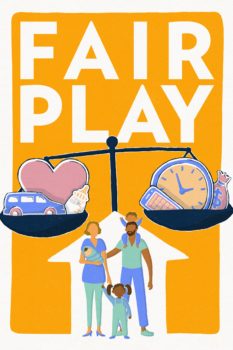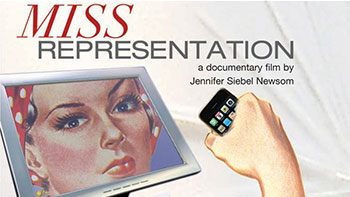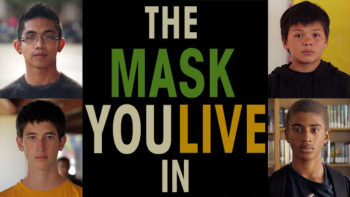Since its origin, the film industry has had a long and bumpy ride with representing gay men. Early Hollywood, with its keen women and emotionally complex gangsters, openly represented homosexuality. However, these “pre-code” depictions of gay men mostly cited the “sissy” archetype, one-dimensionally utilizing high-pitched voices and superficial plot lines.

Tyrell Davis playing the archetypal “sissy” in George Cukor’s Our Betters (1933)
This conflicted relationship heightened in 1934 when Hollywood officially enforced the censorship of itself. The Hays Code was the brainchild of Will H. Hays who loathed Hollywood’s on and off screen foul play. “No picture shall be produced which will lower the moral standards of those who see it” was the Hays Code cornerstone. In fact, Hays aimed for films made under the code to go so far as to correct the standards of society.
Hays’ off-limits material list included nothing short of smuggling, suggestive dancing, ridicule of religion, miscegenation (mixed race relationships), white slavery, scenes of passion, and saying the word “pregnant” on screen, to boot.
However, the first general principle of the code stated that all films must veer from displaying crime, sin, wrongdoing, and evil. When considering the rating system today, this seems to be a similar goal of censorship laws, right? Well the problem with this blanket statement is that it assumes a great deal. It assumes that a society would mostly agree on what falls under “crime, sin, wrongdoing, and evil” and it trusts that society is worthy of such a judgment. In the 1930s, homosexual acts and identifying as gay were considered to fit all four of these vile categories. And in 1934 Hays declared that all gay male characters be eradicated from cinema.
Yet, as in any society, relief valves co-evolve with rigid structures. Consider, for instance, the tradition of throwing bachelorette parties before getting married, indulging on Fat Tuesday before Lent, and letting loose on New Years Eve before your resolutions kick-in. Or consider my personal favorite paradox: when you take a road trip driving from the Midwest to the South; as the amount of religious billboards increases so does the number of advertisements for “adult” clubs.
And so it goes, the more the Hays Code attempted to restrict diverse representations of sexuality, the more creative directors became in representing them.

Farley Granger and John Dall in Alfred Hitchcock’s murder thriller Rope (1948)
A master at working the Hays Code system, Hitchcock was notorious in Hollywood for working with gay and lesbian actors and covertly articulating metaphors for Hays Code no-no’s. In his quintessential Hays Code film, Rope, Hitchcock made Phillip and Brandon’s murder banter seem like pillow talk.
In the 1950s, a few years after the Kinsey Reports were published, the Hays Code became, however faintly, liberalized. That is, it became acceptable once again to depict gay and lesbian characters. But, this time writers, directors, and actors were required to portray such characters as deeply unhappy. After this edit, the Code slowly lost its influence and it officially ended in 1968.
With the switch from self-censorship to the Major Motion Pictures Association’s classification rating system (Ratings from G to X) the Hays Code was dead on paper. However the ideology of the code has lived on in the rating system, intended to “warn” audiences about immoral material. Relatively innocuous films (compared to today’s) like Midnight Cowboy received “X” ratings largely because of its portrayal of gay romance.
Yet for the span of two decades gay boys growing up were shown a mediated world where the only men on screen were burly Rock Hudson-types (Rock Hudson was, in fact, a gay man). The only kind of love was for heterosexual relationships. In other words, there was no representation. And in the 50s the representation was minimal and bleak.
And for every other moviegoer, films articulated a delusion that a diverse array of men’s sexualities didn’t exist in the world, weren’t correct, and shouldn’t be tolerated. The lack of queer representation in cinema left a chasm for future filmmakers to bridge.
Within the past two decades Hollywood has seen tremendous growth in its representation of gay characters. Films like Philadelphia, Brokeback Mountain, and I Love You Phillip Morris have resurrected gay male characters from pallid to panoramic.

Jim Carrey and Ewan McGregor in Glenn Ficarra and John Requa’s I Love You Phillip Morris (2009)
Yet there is now an anxiety in Hollywood to put a blinding spotlight on gay characters. For the most part, if they are depicted with complex, multidimensional lives it is because the film specifically explores gay experiences. If the characters are minor they are often homogenized as flamboyant and superficial. With Anderson Cooper’s recent coming out to television, I wonder if there will be a time in the near future when mediated representations of gay men won’t need a “coming out” declaration?
Lisa Wilmore is a blogger for MissRepresentation.org on the topic of masculinity in the media. During her time at Miami University she was editor of The Femellectual, the university Women’s Center’s bi-annual newsletter. She has conducted anthropological research on the embodiment of structural violence and female genital alteration both in the US and abroad. Keep up with her work on Twitter.



